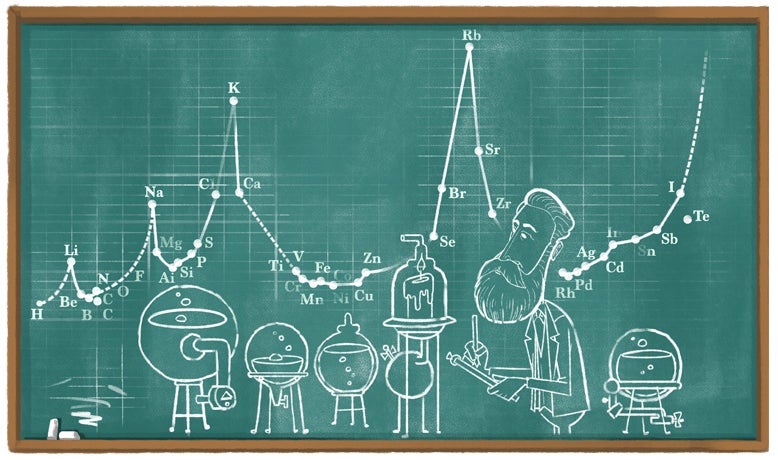Julius Lothar Meyer: Google Doodle celebrates pioneering German chemist who created first periodic table
Meyer was one of pioneers who developed first periodic table

Your support helps us to tell the story
From reproductive rights to climate change to Big Tech, The Independent is on the ground when the story is developing. Whether it's investigating the financials of Elon Musk's pro-Trump PAC or producing our latest documentary, 'The A Word', which shines a light on the American women fighting for reproductive rights, we know how important it is to parse out the facts from the messaging.
At such a critical moment in US history, we need reporters on the ground. Your donation allows us to keep sending journalists to speak to both sides of the story.
The Independent is trusted by Americans across the entire political spectrum. And unlike many other quality news outlets, we choose not to lock Americans out of our reporting and analysis with paywalls. We believe quality journalism should be available to everyone, paid for by those who can afford it.
Your support makes all the difference.Google is celebrating the 190th birthday of the chemist and writer Julius Lothar Meyer with a Doodle depicting him experimenting in the lab to a backdrop of his vertical display of elements.
Born in the town of Varel, Germany, on this day in 1830, Meyer was one of the two pioneers to discover the periodic law of chemical elements and develop the first periodic table.
Meyer grew up in a medical family, his father Friedrich August Meyer was a physician, and he initially studied medicine at the University of Zurich in 1851.
He then turned his focus to physiological chemistry and earned his doctorate from the University of Breslau with a thesis on the effects of carbon monoxide on the blood in 1858.
A year later, he embarked on a career as a science teacher.
Meyer published his seminal book Die Modernen Theorien der Chemie (Modern Chemical Theory), which included a rudimentary system for organising 28 elements based on atomic weight – a precursor to the modern periodic table, in 1864.
Meyer was not alone, however, in the race to create a complete system as Russian chemist Dmitri Mendeleev was developing similar ideas of his own.
Meyer designed a more comprehensive table in 1868, but before he could publish, Mendeleev released a periodic table of all elements known at that time.
Meyer’s subsequent 1870 paper included a revised version of his earlier table and was groundbreaking thanks to its graphical demonstration of the relationship between atomic volume and atomic weight, which provided strong evidence for the periodic law describing cyclical patterns among the elements.
In 1882, Meyer, jointly with Mendeleev, received the Davy Medal from the Royal Society in recognition of their work on the periodic law.
Meyer moved to Tubingen in 1876, where he taught and guided the work of more than 60 doctoral candidates
He died on 11 April 1895, aged 64.
Join our commenting forum
Join thought-provoking conversations, follow other Independent readers and see their replies
Comments